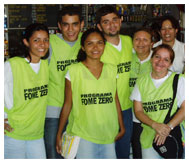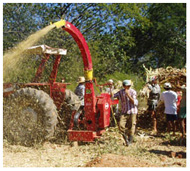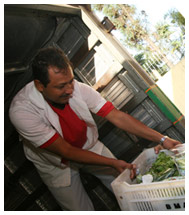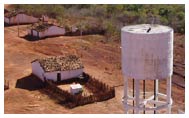"If at the end of my term every Brazilian person has three meals per day, I will have fulfilled my life's mission…" —President Luiz Inácio Lula da Silva, 2003
Brazilian president Luiz Inácio Lula da Silva grew up in a working-class family that could not always afford enough food. At his inauguration, he launched a major new initiative to tackle the problem, known as Fome Zero (Zero Hunger). The program has many different elements to raise the standard of living for poor Brazilians, and to increase their access to affordable, nutritious food, whether they live in rural communities or cities.
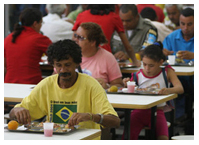 Popular Restaurant, Brazil, 2006
Popular Restaurant, Brazil, 2006Courtesy Bruno Spada, Ministry of Social Development and Fight Against Hunger, Brazil
Popular restaurants, partly inspired by the Popular Restaurant that began in Belo Horizonte in the early 1990s, serve low-income
workers who eat lunch away from home while working in the city. They are subsidized by local and state government and sell affordable, nutritious meals.
Zero Hunger promotes local collective labor practices—known as mutirão— in communities. Farmers in Acauã engage in collective corn—grinding and storage, sharing
resources to cut costs.
 A member of a Zero Hunger team measures the height of a young girl, Acauã, Brazil, 2004
A member of a Zero Hunger team measures the height of a young girl, Acauã, Brazil, 2004Courtesy Aaron Ansell
A pilot program for Zero Hunger was first tested in Acauã and Guaribas, small rural areas within the northeastern state of Piauí. Health teams made up of local
young people and workers from the capital city of Teresina took "before" and "after" biometric measurements—such as height and weight—of participants to evaluate the impact of the program.
The program tackles poverty by promoting agricultural
development. Before Zero Hunger built this water tower in Guaribas in
2004 the town had no running water. Residents had to travel to a water
hole a mile away.
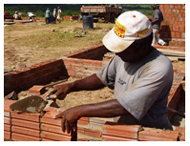 Acauã man builds a house for himself, funded by Zero Hunger, Piauí, Brazil, 2004
Acauã man builds a house for himself, funded by Zero Hunger, Piauí, Brazil, 2004Courtesy Aaron Ansell
Housing for the homeless is an important component of the program. Local people are hired as carpenters and masons. The completed houses have electricity, septic tanks, toilets, and solid roofs.
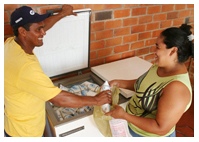 Zero Hunger distributes milk, Parnaíba, Brazil,
2006
Zero Hunger distributes milk, Parnaíba, Brazil,
2006Courtesy Bruno Spada, Ministry of Social Development and Fight Against Hunger, Brazil
Zero Hunger has been praised by the Food and
Agriculture Organization (FAO) and the World Bank and has inspired similar
efforts elsewhere. In October 2005, the FAO announced a partnership with
Brazil to bring the National School Nutrition Program to poor countries,
beginning with Haiti, and then collaborating on larger food security programs
in Angola, Cape Verde, and Mozambique.
